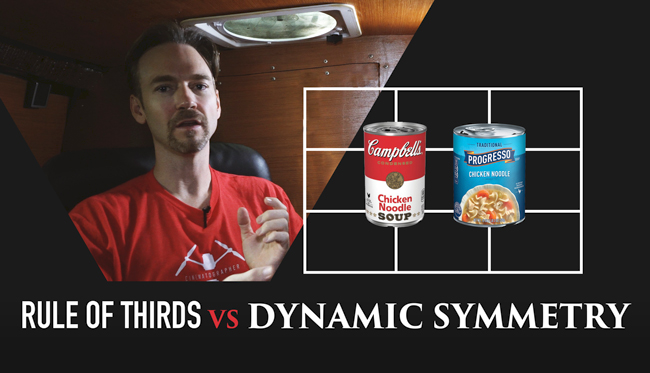Rule of Thirds vs Dynamic Symmetry Video [Fun Analogy and Tips]

#496
Thanks for all of the continued support everyone, welcome back!
I’ve got a new video for everyone to enjoy today. This time we compare the rule of thirds grid to dynamic symmetry grids in a fun analogy video. Understanding the difference will help guide our mastery of composition in our photography and art. We’ve all been led to believe various old wives’ tales while growing up, without understanding them on a deeper level; just accepting them for hearsay. The rule of thirds is taught in a similar way, which also relates to our chicken soup analogy (see Day 24). Let’s check out the video and learn all about it!
Composition Isn’t Something We Should Learn Quickly
Composition is a difficult thing to understand for artists, which is why the rule of thirds is taught to beginners…it’s easy to teach and understand. Place your subject on a third and call it good. Yet, just because something is easy to teach beginners, doesn’t mean that it’s good for beginners.
Just like the old wives tale of chicken soup. We hear, over and over, that it’s going to help heal our illness, but that’s all we hear. We don’t dig deeper to actually understand what type of chicken soup will help. Not all chicken soups are beneficial, just like the grid we choose to use in our art to create something masterful.
By digging deeper into an old wives’ tale or the status quo, we’re ensuring that our valuable time is spent wisely, instead of learning something that we can’t continue to grow upon.
The rule of thirds is beneficial for one thing, which is getting the subject out of the center. This is similar to a microwave; it’s quick and serves one main purpose. Unfortunately, we can’t create anything masterful with either of them. If we are true artists, we wouldn’t want to serve our viewers a microwave dinner anyway. We want them to salivate over our art, just as they would a steak dinner at a Michelin Star restaurant.
That’s it for today everyone! Please enjoy the “Rule of Thirds vs Dynamic Symmetry” video below. Take care!



